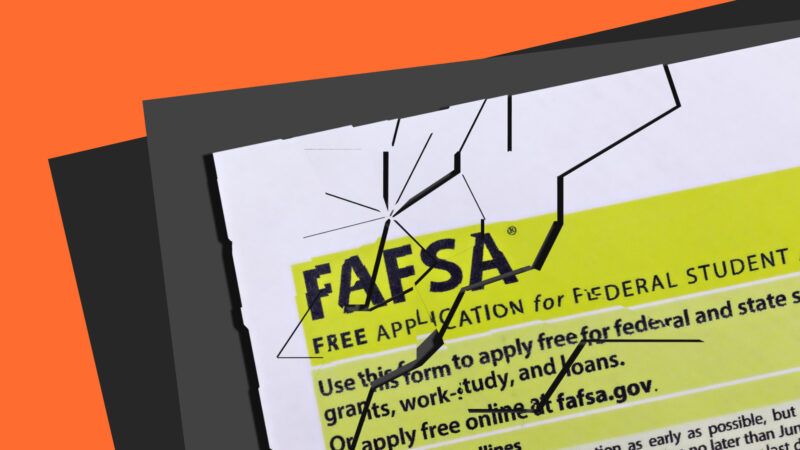Students Called the Ed Department for FAFSA Help. Most Were Ignored.
The financial aid form's rollout was disastrous, according to a new report from the Government Accountability Office.

The Department of Education was supposed to make applying for financial aid easier for college students. Instead, they released an unreliable, glitch-filled mess that launched millions of families into a bureaucratic nightmare.
This week, the Government Accountability Office (GAO) released a 41-page report detailing the Department of Education's failure to provide a functional Free Application for Federal Student Aid (FAFSA) form—a financial aid form required for any college student seeking federal loans or grants, as well as institutional financial aid at most colleges.
The 2021 Consolidated Appropriations Act required the Department of Education to update and streamline this form. The directive was a perfectly reasonable one: Who wouldn't want to make a form that millions of students and their families fill out year after year to be easier to complete and understand?
The problem was that the Department of Education was clearly not up to the task. While the FAFSA is typically released on October 1, the form wasn't made fully available until January 7 of this year, more than three months late. While the new form was much shorter than its predecessors, it quickly became clear that it was riddled with technical bugs.
Many parents and students had extreme difficulty completing the form. In all, the Department of Education found more than 40 technical errors in the form—ranging from an error preventing students born in 2000 from progressing in the form to one in which parents without Social Security numbers were unable to complete the application. While many of these errors were eventually fixed, the Department of Education neglected to inform students when problems were solved, according to the GAO report.
In all, it took five days for the median first-time dependent FAFSA applicant (which includes most high school seniors looking to attend college) to complete the form. FAFSA applications from first-time applicants and high school seniors declined a staggering nine percent from the year before.
According to GAO's report, if students tried to call the Department of Education's call center for help, they were unlike to receive any.
"Nearly three-quarters of calls to Education's call center went unanswered during the first 5 months of the rollout due to understaffing. Education also did not provide timely information to students about processing delays or how they could navigate technical problems," the report reads. "For example, Education's guidance instructed call center representatives to advise some students facing technical problems to just "try again later" rather than proactively notifying them when the problem was resolved, which sometimes took months."
The worst part is that there's not much indication that next year will be any different. So far, the 2025 FAFSA form is set to be significantly delayed.
"Education's lack of clear communication stoked confusion among students, who did not know what, if any steps, they needed to take to complete their application or how to resolve technical barrier," GAO's report reads. "With the next year's FAFSA rollout already delayed up to 2 months and over 20 technical issues still unresolved as of August 2024, students would benefit from more timely and proactive communication from Education going forward."


Show Comments (43)